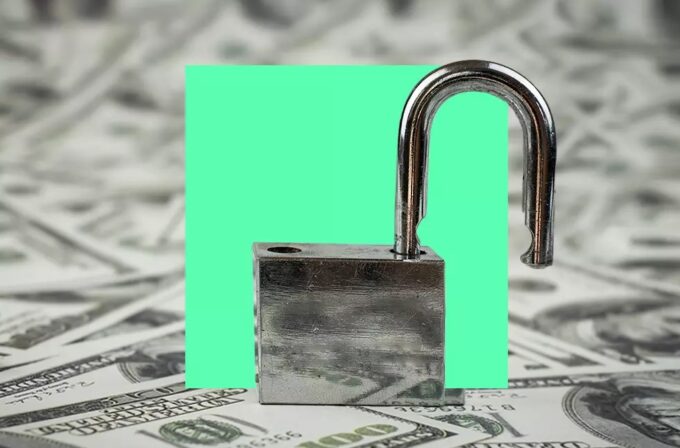Business financing is an integral part of success for any firm. Bootstrapping a company, whilst admirable, is often unviable. Whether it’s paying for start up costs, paying overheads and wages, or investing in expansion products, leveraging a company is a powerful tool.
For founders who are new to operating a business, debt can be a scary topic. In fact, it can become conflated with personal debt, and be seen as something to avoid. However, growing a SME without financing would be more akin to trying to buy a house without a mortgage – an unnecessary and difficult endeavour.
So, here are five things you may not know about business financing.
You don’t have to rely on local lenders

The traditional way of acquiring a business loan would be to visit a local bank branch, but as we will find out in point 2, this isn’t always viable. The most important thing to realise is that the majority of business lenders are operating online. So, if a business in California, for example, wanted to expand to a second store and was looking for a money lending, it doesn’t really matter where they apply for a loan.
As shown on Businessloancompanies.com, California business loans are plentiful online, and means the borrower can now look nation-wide in their search as opposed to state-specific. The benefit of this is of course having more choice, and more choice means lenders are more competitive. You’re more likely to receive a good rate online because you have more information available (i.e. become aware of what is a bad rate).
The only times where rates can become exorbitant are in scenarios in which only one or two lenders are approving you of a loan – which then means competition (your options) are reduced and rates rise. This is much closer to the benefits of the free market than on a high street.
Bank loans can be very slow
Bank borrowing process is extremely slow. The process of a business loan application at a bank can take well over a month. Generally, there are forms to fill out, followed by a physical meeting and drawing up a business plan, and then a verdict which is given after some time of analysis.
It’s not unheard of to take upwards of two months before receiving the funds. Of course, this is completely unworkable for many scenarios. Generally, expansion projects are something planned in advance, but many other reasons driving the need for a business loan is immediacy.
If social distancing policies caused a local store to temporarily close and they were waiting for a government grant to help them – but it was 3 months away – they would want an immediate money lending within a couple of days to cover wages and rent. It’s worth pointing out that online lenders, which are considered the modern alternative to bank loans, pride themselves on approval within ~48 hours, with funding quickly followed.
The additional costs of unsecured loans

Unsecured money lendings are often seen as the ideal loan because it protects personal assets from being repossessed. However, this extra risk for the bank, with no assets as a guarantee, comes at a cost. On average, borrowers can expect to pay 30% or more annually compared to secured loans.
This means paying a lot more in “wasted” interest. Of course, it’s not totally wasteful, because you’re gaining the insurance of not exposing your personal assets. However, if you’re super confident of your repayment schedule for lending, with solid cash flow forecasts, then it may make sense to opt for a secured loan, which will be significantly cheaper.
Banks only offer secured loans, whilst many online lenders tend to have options for both.
Small business lenders were handling PPP loans – it didn’t end well
Paycheck Protection Program loans, which are SBA-backed loans intended to help businesses retain and pay their workforce during the pandemic, were also being handled by small business lenders – not just large banks.
However, it didn’t end up going to plan. Congress is having to investigate a plethora of fraudulent loans facilitated by fintech lenders – namely Kabbage and BlueVine. According to reports, 15% of the total PPP loans were from fintech lenders, yet these account for 75% of fraudulent losses.
This is one example of the automated, fast small business loans having a downside, as they rapidly approved many fraudulent money lendings. ProPublica found that 378 lendings were facilitated by Kabbage (totalling $7 million) to businesses that likely do not exist. Farms were often the root of many of these fraudulent applications, but investigations are on-going.
Kabbage claims that over 75% of its approved loans were done so without human intervention, and that 98% of their PPP borrowers were new clients. This lack of thoroughness is down to the automaticity, something that traditional banks would have likely cottoned onto.
Personal loans for your business are not a good idea

Businesses should be kept as separate and autonomous as possible, and having personal loans for a business can get messy. Not only in the administrative and liability sense, but personal unsecured money lendings can be more than 100% in interest, an astoundingly expensive financial product.
If you have securities, then this can drop to around 5% – which of course is a great rate. So, personal loans can be an option but only when secured, and it’s important to read the small print because some may explicitly state that it’s not for business usage.
What are some alternatives to the traditional business loan?
Business loans have been around for centuries, but in the past few decades there have been an increasing amount of creative ways to borrow money. Here are some alternatives to the traditional (un)secured business loan:
Business line of credit

A business line of credit is a way to have access to a pool of money, but you only pay interest on the amount you actually borrow. So, instead of agreeing to a $5,000 additional money and paying interest on all of it, you can agree on a $5,000 amount, only use $1,000, and pay interest only on the $1,000 – knowing you can take more at any time. However, lending amount limits tend to be lower than normal loans.
Invoice factoring
Invoice factoring is a way to gain finance through using invoices as a type of security. Essentially, if you can prove you have plenty of regular invoices, a lender may take on the responsibility of those invoices and collect them in exchange for a money lending. Of course, the total invoice amount will exceed the loan, as this will be their profit, or could be viewed as the borrower’s interest payment.
Merchant Cash Advance

A merchant cash advance isn’t quite a money lending, but instead is a way to receive funds very quickly. Instead of repaying on a schedule, repayments are made through credit card sales directly. So, a percentage of each sale will be wired straight to the lender as repayment, completely taking away the autonomy – but also responsibility and human error – of managing repayments.
Generally, these are quite expensive and have low limits, but can be very quick to attain and are often unsecured (because the credit card sales agreement is an indirect form of security).









